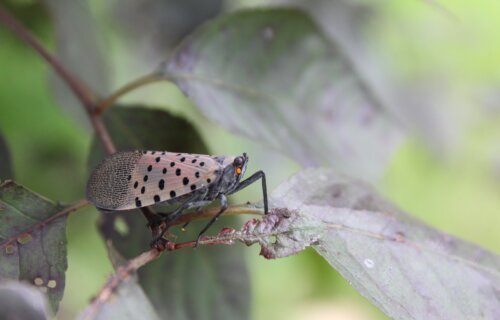NEWARK, Del. — The spotted lanternfly, a highly invasive species that has resurfaced in the United States, is making its way across different states by hitching a ride with humans. New research from the University of Delaware finds these insects latch onto our cars, trucks, and trains, allowing them to travel far distances.
The spotted lanternfly is native to China and was first detected in Pennsylvania in 2014. Since then, the pest has spread to more than 100 counties across 14 states. These hungry miniature menaces cause massive destruction to green spaces.
“Spotted lanternflies can spread quickly into suitable habitat and have the potential to cause significant economic damage to crops and hardwood trees,” says Tara Trammell, a John Bartram associate professor of Urban Forestry in the University of Delaware’s College of Agriculture and Natural Resources, in a statement.. “Studying potential dispersal mechanisms, such as human transportation, can help us develop management approaches to reduce further spread.”
The team simulated how spotted lanternflies spread based on their preferences for habitat, life history, movement, and natural dispersal behaviors. Researchers were surprised to find that most of the bug’s movements were facilitated through human transport. “This supported the current observational data and some of the long-distance jumps we know the spotted lanternfly has made,” explains Zach Ladin, a supervisory wildlife biologist with the U.S. Fish and Wildlife Service and lead author on the study.

One of the concerns about spotted lanternflies is the egg masses they leave behind that hatch during the spring season. If the eggs are allowed to hatch, spotted lanternflies go through four juvenile life stages. They mostly move around by crawling and jumping before becoming winged adults. From June through September, both juveniles and adults are present, making it a critical time for insects to travel to different places and likely when they are getting a lift from humans.
“The primary mode of human-mediated dispersal is still to be determined. For example, it could be egg masses laid on vehicles or gravid females hitchhiking on vehicles,” says Ladin. “That would be a great follow-up experiment. Future studies could mark and track egg masses on train cars and measure egg mass survival, or mark and track hitchhiking nymphs and adults on tractor trailers.”
Identifying the spotted lanternfly or their eggs is important in reducing their population. The study authors recommend the public follow their state’s recommended guidelines for monitoring vehicles, especially when crossing state lines. Using insecticides and traps in the late spring, summer, and early, could also help with lanternfly infestations. In the winter and early spring, the best course of action is destroying their eggs.
Spotted lanternfly egg cases look like a smudge of brownish-gray dirt. Underneath the top layer are several rows of eggs. Removing a single egg case destroys 30-50 spotted lanternfly eggs, preventing the next generation of invasive insects. A scraping object like the edge of a credit card or ice scraper can move the entire egg mass into a container with rubbing alcohol to ensure all the eggs are destroyed.
The study is published in Scientific Reports.

It would help if pictures of what the eggs look like, accompanied the article.
Pictures please.